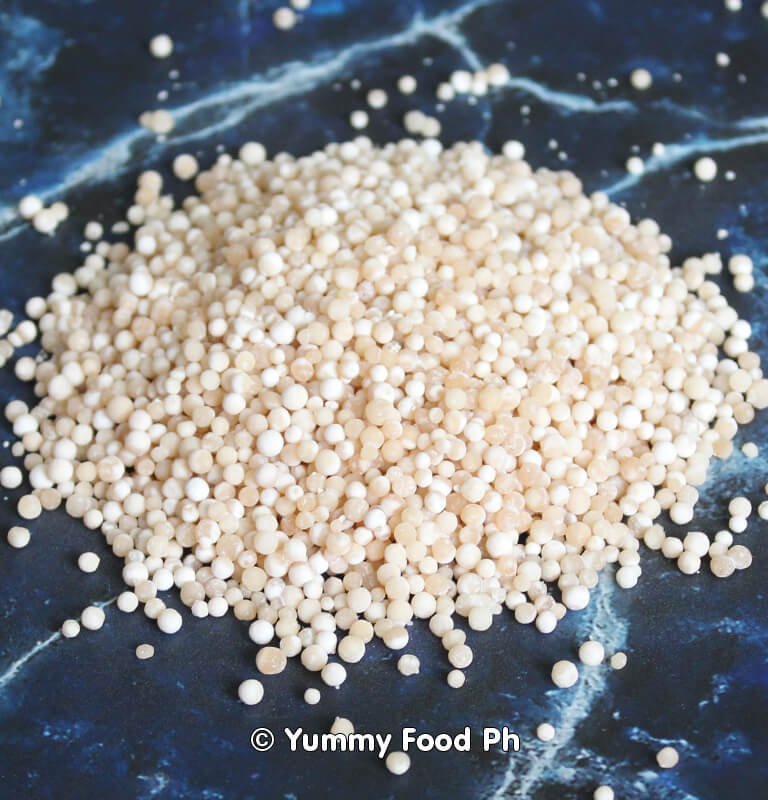Sago Pearls: The Versatile Starch Gems of Tropical Cuisine
Introduction
Sago pearls, pronounced “say-goh,” represent one of the most fascinating starch products derived from tropical palms. These tiny, marble-like spheres originate primarily from the pith of true sago palms (Metroxylon sagu) and cycads (Cycas revoluta), though commercial varieties often use cassava or potato starch as alternatives. With their unique texture-transforming properties and cultural significance across Asia and the Pacific, saģo pearls have evolved from traditional staple food to modern culinary phenomenon.
Production & Varieties
The sago manufacturing process reveals remarkable food science:
- Traditional Extraction: Pounding palm pith → washing out starch → sedimentation
- Pearl Formation: Moist starch rolled into spheres → partially gelatinized through steam heating
- Commercial Variants:
- Natural: Opaque white (raw), translucent (cooked)
- Colored: Vibrant green, pink, or yellow from food-safe dyes
- Sizes: Ranging from 1mm “mini pearls” to 5mm “giant sago”
Culinary Applications
Texture Transformation:
- Raw: Hard, chalky pellets
- Cooked: Soft, chewy spheres with jelly-like bounce
Signature Preparations:
- Desserts:
- Philippine Gulaman at Sago: Iced drink with coconut jelly
- Malaysian Sago Gula Melaka: Palm sugar syrup with coconut milk
- Indian Sabudana Kheer: Milky pudding with cardamom
- Savory Uses:
- Papua New Guinea Saksak: Steamed dumplings
- Indonesian Papeda: Sticky saģo porridge with fish
- Modern Twists:
- Bubble tea alternatives
- Vegan “caviar” replacements
- Gluten-free thickener
Nutritional Profile
While primarily carbohydrate-based (94% starch), saģo offers:
- Rapid energy source (ideal for convalescent foods)
- Gluten-free alternative to wheat
- Low protein content (beneficial for certain renal diets)
Cultural Significance
- Philippines: Essential in samalamig (coolers) and halo-halo
- Malaysia: Key ingredient in lemongrass saģo drinks
- India: Fasting food during religious observances
Storage & Preparation Tips
- Dry Storage: Lasts 2+ years in airtight containers
- Cooking Method:
- Soak 30 minutes
- Boil until translucent (15-20 mins)
- Rinse in cold water
- Pro Tip: Add to boiling syrup for infused sweetness
These ingredients are used in culinary preparations.
Conclusion
From ancient survival food to contemporary dessert star, saģo pearls demonstrate remarkable adaptability. Their unique texture – simultaneously chewy and yielding – continues to inspire both traditional cooks and modernist chefs. As global interest in alternative starches grows, these humble pearls stand poised to transition from tropical specialty to mainstream pantry staple, offering gluten-free versatility and playful texture to 21st-century cuisine.
Visit us on YouTube: Yummy Food PH

